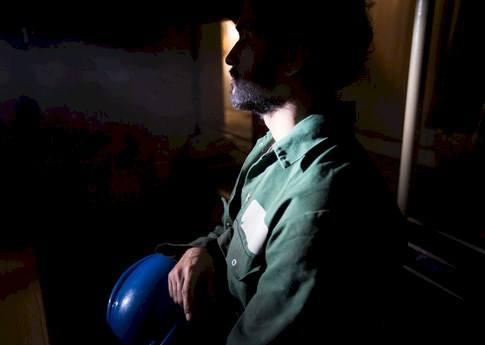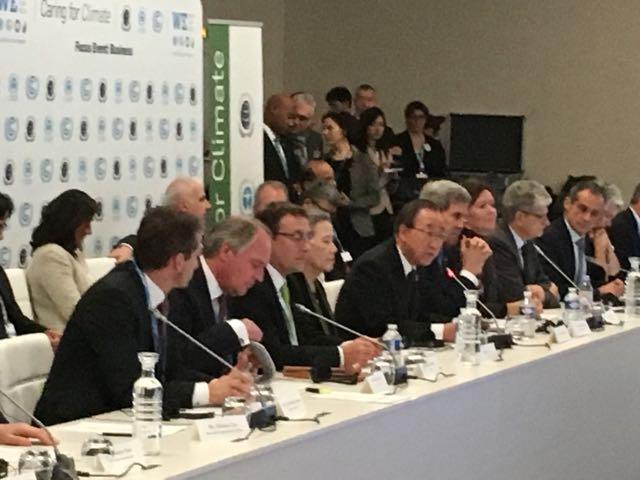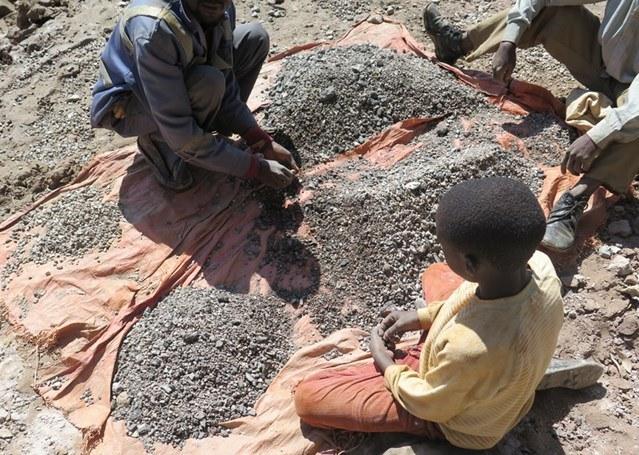The Ecological Case for Continued Meat Consumption


We have long heard the argument that society should move to a plant-based diet in order to save the planet. The real culprit, in the view of many environmentalists, is beef. The industry has been called the “new SUV,” over its links to climate change, and criticized for using far too much land to produce protein that a growing world increasingly demands. Therefore, much of the narrative we hear urges us to eschew meat, especially beef, in order to mitigate climate change risks and heal the planet.
Recent studies, however, suggest that including some meat in the diet may actually be the most responsible approach if we are going to feed the planet sustainably and responsibly. True, the evidence often supports the assumption that many citizens in wealthier nations consume far more protein than necessary, with meat often the biggest culprit.
But some research indicates that some meat in the diet could be all right. In fact, meat could be necessary if the planet is going to feed a growing population during the next few decades.
One recent study, published in the anthropocene science journal Elementa, posits that some diets with low to moderate amounts of beef and other livestock meats made the best use of land. And in a nod to vegetarians, this research posits that a plant-based diet which includes dairy products could be the most efficient way of eating overall.
Part of the issue, say the study’s authors, is that many consumers -- and even scientists -- consider land dedicated to the production of food as an aggregate. But across the world, land on which food crops are raised actually varies. Cultivated cropland is land on which seasonal crops such as vegetables, fruits, nuts and legumes are raised. Perennial cropland includes farms on which grasses such as hay are produced.
Then there is pasture land, which is generally located in areas where the farming of crops is not feasible. Examples include wide swathes of the Canadian prairies or northwest Scotland, where the soil is too acidic and climate too inhospitable to the cultivation of crops.
Another recent study out of the Netherlands suggests improved efficiencies and a shift in how livestock are fed could supply about a third of the world’s protein with animal-based products – without any further competition for land between what is grown for feed and what would be needed for food production. In order for such a scenario to occur, however, the world would have to change how cattle and other livestock are fed.
This study’s author, Hannah van Zanten, said the answer can be found in food waste, byproducts from food production, biomass and even insects, as they have a low feed-conversion ratio and can be produced relatively quickly. Such a transformation within the global beef supply chain would be a Herculean task, however, as farmers of grasses such as hay and alfalfa would have to be convinced to grow new crops. And in any event, the efficiency of North American cattle ranchers has long relied on feeding cattle the most efficient blend of grasses – which reduces the time it takes to fatten cattle and also results in fewer greenhouse gas emissions into the atmosphere.
But is the global beef industry really the bogeyman many make it out to be? At last week’s Global Conference on Sustainable Beef, the event’s keynote speaker, Professer David Hughes, made the case that beef will be a niche product in the near term. The rise of aquaculture, along with the relative efficiency of poultry raising, means fish and chicken will likely remain the preferred sources of animal protein in the developing world. And in North America, consumers have changed their eating habits after four decades of nutritionists lecturing us about the perceived health risks of eating beef. Despite the most recent uptick in beef consumption in North America, current trends suggest beef will be more of an occasional treat than the staple it was during our grandparents’ generation.
Amongst all the conflicting science, what is clear is that the beef industry is changing because it knows it must. As Dr. Hughes reminded his audience, there will be no premium for being “green.” But if the beef industry does not change their ways, there will be a serious discount -- as in, consumers who eschew beef for other sources of protein. The challenge the beef industry faces is that it must take successes in efficiency and sustainability in North America and apply them in major beef-producing countries such as India, Brazil, Pakistan and Colombia – and then the world’s meatpackers will have an even stronger argument in making their case that they can play a vital role in feeding a rapidly growing world.
Image credit: Neil Palmer/Flickr
Citizens Demand Swiss Firms Be Held Accountable for Human Rights, Environmental Policies


On Monday, the Swiss Coalition for Corporate Justice (SCCJ) delivered a petition to the Federal Chancery in Bern to support a proposed constitutional amendment called the Swiss Responsible Business Initiative. With 120,000 signatures, the petition could soon set in motion an initiative on which Switzerland’s citizens would vote in order to compel the country’s multinational companies to complete environmental and human rights due diligence for all of their business activities abroad.
Should this initiative pass -- and this petition scored 20,000 more signatures than needed to place it on a ballot -- companies based in Switzerland would become legally obligated to ensure the protection of both human rights and the environment throughout all of their business operations. Such reviews would be based on the United Nations’ Guiding Principles on Business and Human Rights, which behoove companies to respect human rights no matter how large or small. This responsibility also extends companies’ responsibilities to third parties – which means companies could no longer hide behind excuses like “we did not know” when it comes to their supply chains.
Upon becoming law, this amendment would allow citizens across the world who claim either human rights violations or environmental damage to file litigation against companies in Switzerland’s court system. If companies have not completed their due diligence, they will be held liable. If that same company can prove that it completed all the necessary means to prevent such abuses, it would then be judged to be exempt from any such liability.
The petition was delivered after the SCCJ launched previous petitions and parliamentary maneuvers, which until this week were unsuccessful. The SCCJ claims it is joined by 80 NGOs and trade unions, which insist that multinational companies have for too long taken advantage of weak judicial and enforcement systems in the countries in which they operate. Arguing that “Swiss quality” infers high quality standards, fastidious compliance with the law and fair business practices, SCCJ’s petition demands that these companies hold the same standards abroad as they would in Switzerland.
Multinational companies are likely watching the progression of this initiative closely, as companies continue to reincorporate in Switzerland to avoid higher corporate taxes in their home countries.
This trend is especially true of U.S. companies. Garmin, the popular GPS device company founded in Kansas, now has its headquarters in Schaffhausen, Switzerland. And considering the renewed outcry over conflict minerals, it is on this company to ensure its policy on this front is as tightly enforced as the company says. Transocean, which was implicated in the 2010 Deepwater Horizon explosion and oil spill, is also based in Switzerland. And the former Tyco Electronics, now TE Connectivity, has its central corporate offices in the same town as Garmin.
For years, companies have maintained that self-regulation is enough to ensure they are doing what they can to prevent human rights abuses and environmental degradation and mitigate their contributions to climate change. But many NGOs say change isn't happening quickly enough, which is now why Swiss citizens have an opportunity to set a precedent that companies must back up their words with concrete action.
Image credit: Martin Agegglen/Flickr
Can Probiotics Replace Antibiotics on the Farm?


According to the U.S. Food and Drug Administration, sales of antimicrobial medication approved for use in food-producing animals rose by 22 percent from 2009 through 2014. As the use of antibiotics on farm animals increases, physicians and health experts began to warn of the dangers of antimicrobial resistance. And those calls are only getting louder.
According to a 2014 assessment from the World Health Organization: "Antimicrobial resistance (AMR) threatens the effective prevention and treatment of an ever-increasing range of infections caused by bacteria, parasites, viruses and fungi ... A post-antibiotic era – in which common infections and minor injuries can kill – far from being an apocalyptic fantasy, is instead a very real possibility for the 21st century."
As Kaleigh Rogers, a staff writer at Motherboard, said on Wednesday at SXSW Eco: "That’s about as dramatic as the World Health Organization gets, which means we really need action."
Fortunately, thanks to growing consumer awareness and demand, food companies are responding in kind. The past two years saw a deluge of companies pledging to eliminate unnecessary antibiotics from their meat supply chains. Forward-thinking firms like Chipotle and Panera Bread are already virtually antibiotic-free, and other big-name brands -- such as Tyson Foods, McDonald's, Wendy's and Costco -- pledged to make the switch over the next few years.
As a massive number of companies make antibiotic-free pledges in response to consumer pressure, supply becomes a serious issue. When six of the largest U.S. school districts tried to switch to antibiotic-free poultry in 2014, chicken sellers like Tyson Foods said they could not change their production systems quickly enough to meet the demand, Reuters reported last year.
But an unexpected tool could help farmers reduce their use of unnecessary antimicrobials while keeping growth and nutrition consistent: probiotics. And no, we're not talking about yogurt for chickens.
"When you’re talking about animal health and animal production, probiotics can be good for several reasons," Michelle Kromm, chief veterinarian for turkey producer Jennie-O Turkey Store, said at SXSW Eco. "On the efficiency side of things, we can find bacteria that could take less corn and soy feed to get the same amount of either weight gain or egg production. We can also use probiotics to combat the opportunity for food safety pathogens, such as salmonella, to colonize animals."
At the start of this year, Adisseo and Novozymes -- two global leaders in the animal nutrition and feed additive industry -- launched a probiotic for poultry on the U.S. market, as well as in a number of countries in the Middle East and Southeast Asia. Developed from a naturally-occurring bacterium found in soil, the probiotic can optimize feed conversion by 2 to 2.5 percent. That may not sound like much, but when you're talking about farms with hundreds of thousands of birds, that can mean big savings for farmers - and healthier birds. This product and others like it can also help farmers regulate their birds' gut health, which promotes overall health and reduces the need for therapeutic antimicrobials.
We sat down with Derrick Lewis, senior manager of animal health and nutrition and industrial microbiology for Novozymes, after the panel. In this quick-fire interview, we find out more about the company's new probiotic and how it can address antimicrobial resistance.
TriplePundit: How long has Novozymes been working on probiotics for farm animals?
Derrick Lewis: We launched our first product earlier this year, so we’ve been working in the field for a number of years now. But it’s still fairly new for Novozymes. We worked in the animal nutrition space for a number of years selling our feed enzymes, so this is the next step in overall animal health and nutrition.
3p: And your probiotic products are best suited for larger farms?
DL: That’s where we can make the most impact, so it’s really the economy of scale.
3p: Can you speak to some of the benefits of employing probiotics on the farm, both for animal health and also for human health with respect to antimicrobial resistance?
DL: Our goal is not to push for antibiotic removal. We see consumers making that demand. We see companies removing antibiotics from their production setups today. And what we’re trying to do is think of sustainable ways to make up for that performance dip that they’re going to see when they remove those antibiotics. If we can have a sustainable, natural product that can improve feed efficiency, that’s going to be a benefit.
3p: So, when you say feed efficiency, you mean using less feed to get the same nutritional benefit for the animal and the same growth?
DL: Fewer resources, yes.
3p: How pervasive is the use of antibiotics on the farm? On your panel, you mentioned that this practice has been around for a while. But are farmers using it, or does it still need some time to catch on?
DL: It’s definitely still growing in popularity. I think people are becoming more aware of probiotics, they’re becoming more aware of the benefits, and they’re seeing more [consistently effective] probiotic [strains on the market].
3p: What’s the cost-benefit for the farmer? Is this something that introduces a higher up-front cost? Could it save money in the long run?
DL: When we talk about value, we’re talking about the feeding efficiency. They’re using fewer resources, and they’re getting more meat out of the production. So that’s where their value is coming from. It’s not this large up-front cost, and they should be able to recoup their value that they spend on a probiotic.
3p: And birds are less vulnerable to infection in the future, which can further reduce costs, right?
DL: Absolutely. We’re not replacing the antibiotics, but hopefully we have healthier birds so we don’t have a need for an antibiotic.
3p: Is this product line something you’re looking to expand?
DL: Absolutely. This is our first product on the market for [broiler chickens]. We’re certainly interested in probiotics for other animal species and probiotics for other benefits as well. But we’re starting where the most immediate need was, and we certainly think that we can make an impact in broilers.
3p: Do we know of any human health implications that could be associated with the use of probiotics in farm animals?
DL: Probiotics have been used for many, many years and there has not been an issue, so we don’t foresee there being a concern.
We go through all the safety and toxicology tests to make sure that [the probiotics are] safe for animal consumption and also safe for human consumption. Specifically, we look to ensure that they do not produce antibiotics and they do not have any antibiotic-resistance genes. So, we don’t have that same concern that antibiotic growth-promoters have in the industry.
3p: As you continue to develop products like these, do you think a probiotic could completely replace antibiotics for farm animals?
DL: I think it’s still kind of far off. We don’t see it happening on the human side — we still use antibiotics for humans. So, until we get it right on the human side I don’t think that we’ll get it right on the animal side.
The good thing about this probiotic is that we’re not making that push to go antibiotic-free. We’re just giving people a tool if they decide to go antibiotic-free and making it easier for them to do that.
Image credits: 1) Pixabay 2) Courtesy of the author
FIFA Confronts Legal Challenges Over Human Rights Abuses in Qatar


The enthusiasm over the decision to award Qatar the 2022 World Cup, which will be the first held in the Middle East, quickly faded over allegations of corruption and human rights abuses. Amnesty International described the upcoming mega sporting event as a “World Cup of Shame.” The group says the migrants from Bangladesh, India and Nepal who are building Qatar’s new soccer facilities have suffered through forced labor, high recruitment fees and long delays in getting paid. International labor rights NGOs allege that as many as 7,000 workers could die due to the Gulf state’s torrid heat, unsafe working conditions and exhaustion.
Qatar’s government vigorously denied allegations of human rights abuses. And soccer’s global governing body, FIFA, alternated between silence and dismissal of what critics say are appalling working conditions and lax safety. But FIFA cannot ignore this controversy much longer. A Dutch labor rights group, the Netherlands Trade Union Confederation (FNV), is taking legal action against FIFA in its home base of Switzerland.
In a letter drafted and sent to FIFA’s president, Gianni Infantino, the FNV asked the soccer association to pay damages to a Bangladeshi migrant worker, Nadim Sharaful Alam, by the end of this month or a court case will be filed in Zurich.
According to FNV, Alam is emblematic of the ongoing abuses migrant workers in Qatar have endured since the oil state fast-tracked the construction of at least eight stadia and other buildings that will host World Cup events. Alam paid almost 4,000 euros ($4,400) to a recruiter in order to work in what he believed to be a financially rewarding construction job in Qatar. But the reality was much different: Alam claimed he lived in squalid conditions for 18 months, had to surrender his passport upon starting work and, eventually, lost his job and was deported. Now back in Bangladesh, he is in far worse financial straits than he was before he moved to Qatar. And the amount of money he received was barely a tenth of what he paid his recruiter.
FNV is demanding only 10,000 euros ($11,000) in compensation for Alam. But that small amount is a pittance compared to the billions of dollars FIFA will most likely generate from corporate sponsorships, television rights and ticket revenues six years from now. Should Alam win his case, it could open the floodgates for thousands of workers to make claims that they were cheated on their wages – not to mention the indignities suffered by the estimated 1 million workers who have been lured to Qatar in preparation for a World Cup that has fomented far more controversy than goodwill.
Critics of Qatar’s World Cup preparations, as well the country’s human rights record in general, point to the Qatar's kafala labor system. Under this labor scheme, all migrant laborers are required by law to have an in-country sponsor, who is usually responsible for their visa, legal status and living conditions. But critics of kafala say it creates conditions ripe for exploitation, from the denial of wages to the confiscation of passports. Last year, Qatar’s emir announced the “end” of the kafala system. But critics, including the NGO Migrants-Rights.org, retorted: “Renaming kafala is not ending kafala.”
The lesson for FIFA is that, just as companies cannot dodge responsibility for what goes on within their supply chains, soccer's global governing body cannot turn a blind eye to what is happening to workers in Qatar. FIFA made an informed decision to have this event in Qatar back in the winter of 2010; the refusal to address ongoing tragedies affecting foreign workers building stadia along the Gulf will further harm the reputation of an organization already bloodied over bribery, corruption and a refusal to play by the rules.
Image credit: Amnesty International
Researchers: Climate Change is Causing More Forest Fires in the West


Last year, we reached a significant and scary milestone: Atmospheric carbon dioxide passed the 400 parts per million level scientists warn we cannot surpass if we hope to avoid the worst climate change impacts. Well, folks, we passed it. And it’s not looking like we will soon drop below 400 ppm. As Ralph Keeling of the Scripps Institution of Oceanography wrote in a blog post: “It already seems safe to conclude that we won’t be seeing a monthly value below 400 ppm this year.”
We are already dealing with the impacts of climate change. A recent study linked an increase in forest fires in the western U.S. to climate change. The study found that changes in temperature and a vapor pressure deficit “enhanced fuel aridity across western U.S. forests” from 2000 to 2015. Aridity is defined by the American Meteorological Society as “the degree to which a climate lacks effective, life-promoting moisture.” Fuel refers to vegetation.
The enhanced dry conditions of vegetation added an average of nine additional days a year of high fire potential in forest areas, researchers concluded. And climate change accounted for 55 percent of the changes researchers observed in fuel aridity from 1979 to 2015 in western U.S. forests. They estimate that climate change “contributed to an additional 4.2 million hectares of forest fire area” from 1984 to 2015, almost doubling the expected forest fire area. And climate change will continue to cause “increases in fuel aridity” and will continue to be a “driver of increased forest fire activity,” the researchers insisted.
This study is not the first to link climate change to increased risk for forest fires. One study, published in 2014, found “increasing trends in the number of large fires and/or total large fire area per year” in the U.S. Researchers looked at nine different eco-regions in the U.S. and found that the number of large fires increased in seven of those regions. However, they also found that “total fire area trended higher in all nine eco-regions.”
Another study published this year looked at data from 12 weather stations across Canada for fire seasons from 1971 to 2000. Researchers discovered a sensitivity to temperatures increases which “will result in a future with drier fuels and a higher frequency of extreme fire weather days.” A study from 2010 found that future climate change impacts will likely “play a considerably stronger role in driving global fire trends.”
Climate change is linked to extreme weather events
Increased forest fires in the U.S. are not the only climate change impact Americans face today. Extreme weather events are also becoming more frequent. As the U.S. Environmental Protection Agency (EPA) put it: “Climate change is increasing the odds of more extreme weather events taking place.” Heat waves and floods are on the rise, while the frequency of cold waves is dropping.
The National Climate Assessment, conducted by over 300 experts guided by a 60-member Federal Advisory Committee, noted that Americans “are noticing changes all around them.” Some changes are more dramatic than others. Coastal cities are seeing their “streets flood more regularly during storms and high tides.” The effects of Hurricane Matthew are a good example. But coastal cities are not the only ones experiencing floods. Inland cities near large rivers are also flooding more frequently. The summer sea ice in arctic Alaska is receding, and autumn storms are causing more erosion -- which threatens communities with relocation.
We need to reduce emissions and do it now
The fact that we are experiencing the impacts of climate change today means we simply must reduce greenhouse gas emissions. Who we elect for president will decide whether we continue to have a climate change plan. While Hillary Clinton has a plan for climate change, a glance at Donald Trump’s website shows he lacks one. However, Trump has a whole section about energy and advocates that the U.S. unleash “$50 trillion in untapped shale, oil, and natural gas reserves, plus hundreds of years in clean coal reserves.”
Image credit: Flickr/ Daria Devyatkina
Go Off the Beaten Path: How to Make Local Tourism a Win-Win Situation


By Raj Gyawali
For me, travel isn’t about ticking off boxes or putting pins on a map. Its true value comes from experiences that change our way of thinking and enhance our understanding of different ways of life. In turn, we as travelers also impact the people and places we visit by spreading wealth within the local economy and sharing the ideas we bring with us. In short: Travel delivers many wins, on many levels.
I have two stories, from my own experience, that show just how special a local connection can be.
A hostel in the mountains and free cataract surgeries
Back in 1998, I was working in trade and manufacturing selling wooly sweaters to H&M from Nepal. Tim — my business partner and good friend — had just managed to arrange for a group of English students to come to Nepal to have a great time and also contribute toward building a hostel in a school in the mountains. The group had paid for the fun, plus an added amount for charity work. Because they had opted to do the charity, we ensured that they ended up in a village where the charity was going to be put to good use. They helped dig the foundation for the hostel, and then took some of the students from the school with them on the fun part of their trip — a trek in the mountains, a rafting trip, and a generally great time exploring Nepal.
The positive outcomes of this experience were amazing: the spread of money, the enrichment of meeting students from a different country and traveling with them, the building of a hostel, plus the overall enjoyment of being in a new place. Guaranteed, if we go back to the students and ask them what they remembered the most, it will be the school, the children that they befriended, the work they did and the immense sense of fulfillment that came with it. Ask the locals, and the answer will also revolve around what the students from the U.K. came and achieved.
Two years later, Tim brought another group who had fundraised to support their travel to come and conduct a free cataract eye camp in a rural setting in the mountains. Fast forward to 225 successful free operations later (most of the patients might still be blessing the students for the operation), the sense of fulfillment was so high, it resulted in wins on all sides. It also resulted in me pursuing a career in building a demonstrable model in social travel the moment the manufacturing business capitulated in Nepal. That was the birth of socialtours in 2002.
Seeking out ways to spend locally
In my own travels, I have also witnessed the value of seeking out local connections. Once, while trekking in the mountains of Nepal, we tried to benefit not only the local lodges but the local people, so we went around asking for a homestay. At one particular house, the lady told us: “Sure, I have an empty room and I am happy for you to stay there, but I cannot cook for you unless you take care of my daughter.” So we spent the next couple of hours playing with her infant child while she cooked us the most sumptuous meal, which we all enjoyed amidst stories, laughter, and an amazing human connection.
The money we paid for the homestay and the meal went directly to the family, which was greatly appreciated. I happened to meet the lady and her daughter several years later while trekking in the same area, and we had an instant connection upon recounting our experience together, despite not being able to recognize each other’s faces!
A mantra to remember
Much later, while researching how wealth brought in by tourism could further penetrate into the local economy in the Upper Mustang region of Nepal, I discovered that the key tourism value chains are food, manpower and handicrafts. The mantra then becomes quite simple to remember and follow: Eat local food, use local manpower and buy local handicrafts. We can then ensure that our money is spent locally and benefits the local destination.
To make our actions even more responsible, we can consider paying fairly, ensuring our carbon footprint is low and that the suppliers are not exploited.
Go off the beaten path
Traveling off the beaten trails not only lets us stray away from crowded hotspots, it also opens the door to a whole new world of discovery. Take Nepal, for example. Who would think Nepal would be a place to discover Shamanistic cleansing, hunting for rare giant cliff bee honey or participating in an age-old inter-country trade practice using yak caravans. The potential is endless, and this is true for every country in the world.
All it takes is some research, talking to the right people, and figuring out how to navigate the non-negotiables in travel (and determining their level of priority): lodging, food, language, safety and access. Once those are figured out, a new world opens up.
A word of caution: Balance is key. traveling off the beaten trail does not necessarily mean avoiding all popular hotspots. It is a way to enrich the experience that we would normally have in a country through a different mechanism, which generally leaves us (and everyone with whom we come in contact) with a warm fuzzy feeling.
See you down the trail!
Image credit: Jeff Hopper via Unsplash
Raj Gyawali is a local travel expert for Kimkim who lives in Nepal and runs his own agency, Social Tours, with a focus on sustainable tourism. When he’s not busy putting trips together or discussing responsible tourism policies, you’ll find him cycling the trails around Kathmandu. Follow him @KingGyawali
Twitter Chat Recap: #CitCaesars3p


By Gwen Migita
Last month, Caesars was pleased to partner with TriplePundit to host a Twitter chat on our latest programs and accomplishments, as shared in our seventh annual citizenship report, Connecting for #Citizenship. I joined with leaders from our properties; our longtime partner and sustainability reporting expert Elaine Cohen, and sustainable business expert Andrew Winston, who also serves on Caesars’ External Advisory Board. Check out the #CitCaesars3p Storify, and read on for more details – including answers to questions we didn’t have time to address in the chat.
We kicked off the chat with some of our highlights from 2015, such as our $39 billion in generated economic value, our progress on energy, GHG, water and waste goals, our 80 percent wellness program participation rate, and our continued commitment to responsible gaming. Next, we explored the work of two properties: Horseshoe Baltimore and Harrah’s North Kansas City.
Horseshoe Baltimore: Working to transform a city
Noah Hirsch, our VP of marketing at Horseshoe Baltimore, shared some highlights of the casino’s accomplishments. An important goal of Horseshoe Baltimore is to serve as a catalyst for development for the city’s southern gateway.
First and foremost, the property is committed to employment in the city of Baltimore, with nearly 60 percent of staff residing within the city. In its second year of operations, Horseshoe Baltimore has welcomed more than 9 million guests and paid more than $124 million in gaming taxes, while support
ing 48 local organizations with $160,000 in donations and more than 2,200 hours of community service in 2015 alone. For example, Horseshoe Baltimore supported the establishment of an employment center for Baltimore residents and supported waterway cleanup and trail maintenance.
More recently, in September, Horseshoe Baltimore hosted a centennial celebration of Fort McHenry Park along with National Park Trust and the local YMCA, helping to get kids back into nature.
Harrah’s Kansas City: Creating a best place to work
Jennifer Jennings, VP of human resources at Harrah’s North Kansas City, discussed why her property has been on the Kansas City Business Journal Best Places to Work list for ten years running. Harrah’s North Kansas City strives to take care of employees, from tuition reimbursement to an employee relief fund.
Creative programs like Walk a While in My Shoes, in which senior leaders job shadow roles like housekeeping, help management and employees understand one another. The property shows its care for the community, too, placing second place among Caesars properties in a Senior Appreciation Month contest for its commitment to feeding local seniors facing food insecurity.
Meetings for good
The Twitter chat was also a chance to promote Caesars new Meetings for Good initiative, an addition to our existing Responsible Meetings program. Meetings for Good connects our meetings customers with local nonprofits to create customized volunteer programs that can be integrated into their events. Participating nonprofits include organizations dedicated to seniors, environmental sustainability, education, health and wellness, and deployed soldiers and veterans.
Answering additional questions from the chat
As with all Twitter chats, questions were coming fast and furious about everything from our responsible meetings standards to how we developed CodeGreen metrics. We couldn’t answer all of the questions before the time was up, so here are some additional questions and our responses:
Q from @ImperativeImpact: How is @CaesarsEnt using their human capital to give back + build #employeeengagement?
A: Our HERO program empowers employees to support causes important to their communities. 260,000+ hours volunteered in 2015.
Q from @dayoungtx: Any unique challenges driving sustainability in hotels that are active 24hrs a day like in yours Vegas?
A: Energy is definitely a challenge for 24-hour operation! We’ve invested more than $70 million in 180+ energy efficiency projects since 2004.
Q from @iPura: Poultry industry is focused on #FoodSafety & improved processing methods. Have any favorite suppliers?
A: We've been recognized for our dedication to a diverse supply base -- learn more about our responsible supply chain here.
Q from @ecodeogroup: How do you think #CSRstorytelling could help @CitizenCaesars engage new customers esp #Millennials?
A: We know #diversity is important to #millennials, just one example is our @CZRDiversity handle that we use to connect with diverse suppliers.
Q from @PeggyatKC: How do employees 'win'? great way to give back! (Re @CitizenCaesars A10a)
A: The annual #cleantheworld contest is an essay contest that’s open to our housekeeping staff, who work so hard at collecting soaps!
Caesars thanks all those on Twitter who participated in #CitCaesars3p! If you have more questions about our citizenship programs or our new report, please reach out to us at [email protected].
Gwen Migita is vice president of sustainability and corporate citizenship for Caesars.
Will America's Climate Agenda Fall Apart Without Obama?


Over the past eight years, U.S. President Barack Obama did more to address climate change than any previous administration. The 44th president updated fuel-efficiency standards for the first time in three decades, invested an unprecedented $90 billion in renewable energy development, created the country's first carbon standards for power plants, and signed the Paris Agreement to finally bring America to the right side of global climate negotiations.
"Anybody who followed what this president has done — not only from day one but through today — recognizes that no single president has made such a large contribution to reducing greenhouse gas emissions both at home and around the world," said Heather Zichal, former deputy assistant to the president for energy and climate change. "In previous years, [the U.S.] hasn’t even shown up to climate talks. Now, we’re leading the talks."
On Tuesday at SXSW Eco in Austin, Texas, Zichal joined two current members of the Obama administration to discuss questions at the top of everyone's minds: What will happen to America's climate agenda when Obama steps down? How will a Hillary Clinton administration further the country's work on climate action? And how much could a Donald Trump administration derail the progress we've made?
"As we are thinking about passing the baton from an Obama administration to a Clinton administration, there’s tremendous opportunity," said Zichal, who joined the Obama camp during the 2008 campaign and now works as a private consultant. "Chief among those is the implementation of the Clean Power Plan. [The Obama administration] figured out what that policy should look like, and the second phase is to work directly with the states and figure out what their implementation plans are going to be."
Also on deck early in the next presidency is the mid-term review of fuel-efficiency standards for light-duty vehicles, as well as a final decision regarding coal leasing on federal land -- a practice Obama temporarily suspended in January, Zichal said. "That alone is an exciting agenda for an incoming president."
But Zichal was quick to note GOP candidate Donald Trump's purported opposition to such policies, referencing his promises to abolish the Environmental Protection Agency and roll back all environmental regulations passed under Obama. And while 3p has previously reported that Trump's professed plan to "renegotiate" the Paris climate agreement is not logistically feasible, the New York businessman could significantly impact what's happening on the climate front here at home, Zichal warned.
"Because this president was not able to work with Congress … much of what he has done is through existing regulatory authorities," she explained. "And the important thing to remember when you go to the polls in November is that all of those things, because they were done with regulatory authority, can easily be unwound — fuel economy standards, the Clean Power Plan, all of that is very much at risk in this election if it doesn’t go right."
Okay, that's coming from a woman who once served within the Obama administration. But we live in a country where everyone deserves representation, and a good half of the country opposes Obama's climate agenda, right? Not exactly, said Rohan Patel, special assistant to the president for intergovernmental affairs and senior White House advisor for climate and energy policy.
Patel pointed to ongoing surveys the administration conducted about the Clean Power Plan. They used several terms to refer to the plan, and both included and omitted Obama's name. They were surprised to see that the results were remarkably consistent -- and much more favorable than anticipated.
"In Florida, 68 percent of people want to see the Clean Power Plan move forward. In Michigan, in Colorado, [we saw the] same general percentages," Patel said on Tuesday. "Even if they don’t believe climate change is human caused, and even if they don’t believe in the science, there are so many things that we can do to tackle this in common cause. That’s what we're seeing in places like Texas, in places like Ohio. Iowa has more than 40 percent of their energy coming from wind."
Dan Utech, who occupies Zichal's former position in the administration, agreed that Americans have reached a much more clear consensus on clean energy and climate action than many realize. "If you look at the surveys, a majority of Americans believe climate change is a problem. They believe in the solutions set forth, and they want more of it."
With the heated back-and-forth that has so characterized the country for the better part of a decade, it's tough to believe we're in such agreement on these issues. But the administration's findings echo a survey conducted earlier this year by the Yale Program on Climate Change Communication. In the survey, 56 percent of self-proclaimed Trump voters said they believe climate change is happening. These numbers were far higher for supporters of other candidates (Bernie Sanders: 93 percent, Hillary Clinton: 92 percent, and John Kasich: 71 percent). But the findings indicate we're in much closer agreement than politicians and the media would have us believe.
It's also worth noting that the Republican party's purported opposition to climate action is a relatively new phenomenon. "In 2008, the Republican presidential platform acknowledged that climate change was a problem, acknowledged it was manmade, and that we should take action," Zichal noted. "John McCain was running for president, and he had proposed a bipartisan bill to put forward cap and trade." Good luck finding any reference to these facts in the news today -- an unfortunate reality Zichal insisted must change.
"In this very divided country, we have to find new opportunities to create political space and bring Republicans back to the table," Zichal continued. "The Republican party has been in the right place on this issue. We just need to find a way to create some space to bring them back."Opportunities around the renewable agenda is perfect. I think you talk about climate preparedness. Let's just blast past whether climate change is a problem and talk about how we’re going to build better, smarter, safer communities."
After famously calling half of her opponent's supporters a "basket of deplorables," is a President Clinton prepared to bridge this divide and bring America's climate action plan to the next level? And if he were elected, would a President Trump warm up to the obvious benefits of the clean-energy economy and change his tune? Only time will tell. But the experts seemed optimistic about the future energy and climate landscape in the U.S. -- even beyond the Oval Office.
"There are huge economic benefits and net-pluses … to all of the steps this administration has taken to transition to a clean-energy economy," Zichal said. "But what’s so exciting to me is that there are technologies out there that we haven’t even dreamt of … As much as I see opportunity with existing technology, I think there’s huge opportunity around innovation and in all of the investments that are being made in the clean-tech sector."
Image credits: 1) Flickr/DonkeyHotey 2) Courtesy of the author
Art of the Possible Redux: How the Paris Agreement Came Into Force and What Happens Next


On Oct. 6, the Paris Agreement passed its last major hurdle, meeting the 55/55 threshold to come into force. As of this writing, 76 of the 195 nations that signed the Paris Agreement at COP21 in December have ratified the treaty within their own national governments. So far, ratifying nations represent 60 percent of global greenhouse gas emissions.
For anyone who has followed this process over the past 20 years, and for those of us who came home from COP15 disheartened and dubious of the UNFCCC process, this is a "giant leap for mankind." Or, as former UNFCCC Chief Yvo de Boer says, it's "a small step for mankind, a giant leap for man." The door was opened in Paris, and last week we stepped through the threshold, once again affirming the Art of the Possible.
How did this happen? And what happens now?
There are no villains here
The mood in Paris last December was unmistakable and the optimism palpable. After decades of gridlock and disappointment, negotiations at the COP21 climate conference held to their promise of progress. As Andrew Deutz, director of international government relations for the Nature Conservancy, told me: What set COP21 apart from past negotiations was that this time “there were no villains.”
From the very first day when world leaders gathered at Le Bourget, to the hard-fought final deliberations stretching into the wee hours of Dec. 12, nations of the world were determined to put the past behind them and forge a new path.
And so they did.
As U.N. Secretary-General Ban Ki-Moon said at a press conference: “Perfection is the enemy. Political momentum might not come again. Do not squander it.”
Just two weeks after the brutal terrorist attacks in Paris, COP21 proved there is common ground on which humanity can act. All nations, all people and all sectors of society share the same earth beneath our feet, air that we breathe, and water that we drink. Paris was a high-water mark in a process fraught with division and distrust. The Paris agreement is far from perfect, but it signaled an opening. We had given ourselves an opportunity that was long overdue.
Keep the momentum alive
After the back-slapping and jubilation, reality inevitably set in. Getting 195 nations to sign a document was hard enough. Turning the words on a page into real action was something else entirely. Bringing the Paris Agreement into force required 55 signatories of the treaty, representing 55 percent of global GHG emissions, to “deposit instruments of ratification” from their home countries.
The ratification process might take years. Could the world maintain the momentum of Paris?
Initial signs were positive. On April 22, 175 parties to the agreement participated in a signing ceremony at U.N. Headquarters. Fifteen deposited their instruments of ratification.
Other countries soon followed. But questions remained about how soon the 55/55 threshold could be met. The world churned on. Tragic conflict raged in the Middle East, as it does to this day. Terrorism and civil unrest continued, seemingly unabated. A turn toward tribalism in national politics brought Brexit and the spectre of a possible Donald Trump presidency.
Would the world become distracted, consumed once again by our fears and suspicions, unable to move?
A world united: A race to the top
As one nation after another submitted their instruments of ratification, some dared hope that full ratification might come much sooner than first expected -- maybe even this year. But as late as September, that remained an open question. Then, like dominoes, the big players fell into place: China and the United States, India, and then the EU. As Andrew Light of the World Resources Institute said at a press conference on Oct. 5, it was a “race to the top.”
The threshold is now met, and the Paris Agreement comes into full force on Nov. 4.
Diligence in the days ahead
“This week is going to be historic,” Paula Caballero, the director of WRI's Climate Program, said at the press conference.
“The two thresholds that are needed for the landmark Paris Agreement on climate change to come into force will be met,” Caballero said. “The Paris Agreement itself was an unparalleled global achievement … What was unthinkable even one month ago is now happening. This is one of the fastest entry-into-force of any multi-lateral agreement. It has been joined by countries from around the world, developed and developing, large countries and small countries.”
To be sure, there remains a long, hard row to hoe to secure a livable planet in the years, decades and centuries to come. Climate change is not some distant phantom; it is here and now. And it will get worse before it gets better, no matter what we do.
There is no magic wand to cure the challenges of global warming and sustainable development. As it stands now, the intended contributions from all signatory nations don’t add up if we hope to limit warming to 1.5 degrees Celsius, let alone 2 degrees. But we go into the coming years with our eyes wide open and the framework in place to increase our ambitions. So, now it is on to COP22 in Marrakesh and CMA1, the first meeting under the Paris Agreement.
Ratification is no instant panacea. But instead of the beginning of the end, we now arrive at the end of the beginning. Let’s get to work.
Images credits: Thomas Schueneman, all rights reserved
This is a revised version of an article published on GlobalWarmingisReal.com
Child Labor in Cobalt Mines is a Stain on the Global Electronics Industry


A recent Washington Post story on the dangerous cobalt mines throughout the Democratic Republic of the Congo -- within which thousands of impoverished miners, including children, toil for long hours for a few dollars a day -- follows a long trail of press reports and NGO studies. NGOs have documented such abuses for almost a year. But the report by Todd C. Frankel brings a renewed sense of urgency. It is time for manufacturers to stop passing the buck and take strong action on cleaning up their supply chains.
Cobalt is a shiny silver-grey metal that is also found in pigments that give paint and glass their stellar blue color. It has also become integral to the global electronics supply chain. The metal allows lithium-ion batteries to power much of what we use in our daily lives. Thanks to this element, smartphones are small enough to fit into a shirt pocket or purse, laptops can travel easily, and electric vehicles have the look, size and feel of conventional automobiles.
But the demand for this element has punishing effects across the Congo. About half of the world’s supply of cobalt comes from this almost entirely landlocked nation, and much of the mining activity is centered near the south-central cities of Kambove and Kolwezi. The sophisticated electronics that rely on cobalt in their batteries are in stark contrast to the “artisanal” way in which this element is mined. Men, who call themselves creuseurs (French for "diggers"), dig into the ground using the most rudimentary tools and often lack the use of any protective equipment. Women are generally tasked with washing the mineral rocks before they are dumped into sacks and sold at open markets.
Children as young as 7 years old also do this work. Whether they collect pebbles containing this coveted element or haul sacks of rocks that weigh anywhere from 45 to 90 pounds, an Amnesty International report says the end result is pay averaging $2 a day.
That pay comes with several costs to children: illnesses from breathing in noxious dust; muscle and skeletal injuries that cause lifelong damage to developing bodies; physical abuse; theft of these already meager wages; and a life condemned to poverty. These human rights abuses are endemic in the industry -- with UNICEF estimating that at least 40,000 children are working in or around these mines, amounting to a third of all Congolese miners.
For months, the world’s largest smartphone and other electronics manufacturers, including Apple, Samsung and LG, were largely dismissive of allegations that the cobalt in their products have ties to child labor. In the wake of the Washington Post investigation, Apple admitted that cobalt with ties to child labor made its way into some of the company’s batteries. Samsung, already distracted with its disastrous Galaxy Note 7 recall, reportedly launched an internal investigation. Other companies, including Microsoft, offered the “complex supply chain” excuse.
Much of the problem lies with one of the electronics industry’s most critical suppliers, Huayou Cobalt and its subsidiary, Congo DangFang Mining. Representatives of Huayou Cobalt admitted to the Washington Post that the company had “insufficient awareness of supply chain management.” Many companies denied sourcing from Huayou Cobalt, said they prevent Congolese cobalt from entering their supply chains, or responded with only general statements. Tracking this material is indeed difficult: From the mines where it is extracted, cobalt passes through a myriad of traders, then to ports in either Tanzania or South Africa and, eventually, to one of many lithium-ion battery manufacturers in Asia.
One contributor to the controversy over cobalt and its impact on people is a loophole that was left in the Dodd-Frank Act of 2010. The omnibus law included the directive that the U.S. Securities and Exchange Commission (SEC) issue rules requiring companies to disclose their use of “conflict minerals” if they are necessary to the functionality of their products.
But Dodd-Frank only covers tin, tungsten, tantalum and gold – not cobalt. Hence the flood of cheap cobalt worldwide, driven largely by demand from the U.S. market.
Electronics manufactures are starting to realize that they cannot explain themselves out of this controversy. Apple, which earlier this year said it spent five years improving its supply chain so that it would be free of conflict minerals, is one of the first manufacturers to take on this problem. The company claims to have audited 100 percent of its supply chain. And while it cannot guarantee that all of its products lack materials with ties to human rights abuses, the company took action another step further. Starting in 2017, Apple says it will consider cobalt a conflict mineral for internal disclosure purposes.
Other companies need to take more aggressive action on cobalt as well. But change will be excruciatingly slow: Consumers are accustomed to cheap electronics, the surging popularity of electric vehicles will spark demand for even more cobalt, and Congo ranks as one of the world’s most corrupt nations.
In the meantime, these companies need to partner with NGOs to find a way to make Congolese miners’ lives more bearable. Manufacturers must launch far more aggressive electronic waste recycling programs so less virgin material is processed at the expense of far too many humans’ dignity. Finally, consumers must demand that the makers of electronics disclose exactly where they source cobalt and other conflict minerals.
Image credit: Amnesty International